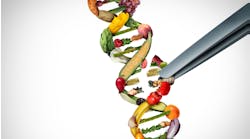Probably few consumers noticed, but Jan. 1 became the long-awaited enforcement date for the labeling of genetically engineered foods. A subject that was hotly debated within the food industry just a few years ago and feared by many consumers has become a non-issue.
That's because many food marketers slowly began labeling their products years ahead of the deadline. And as the labels began appearing, consumers came to realize the products they've been consuming for years, maybe decades, have been made with genetically modified ingredients and haven't done them any harm.
The National Bioengineered Food Disclosure Standard, crafted by USDA in 2018, changed the terminology from genetically modified organisms, or GMOs, to bioengineered (BE) ingredients. USDA created two official and pleasant-looking labels for products, stating the product is either "bioengineered" or "derived from bioengineering." Shoppers should start seeing those on packages at their grocery stores.
Food marketers also could use their own terminology as long as it clearly communicated the presence of BE ingredients -- General Mills was fond of "contains bioengineered food ingredients" -- or a QR code that would take shoppers to a website that explains the presence of the ingredients.
The law technically went into effect Jan. 1 of 2020, but USDA delayed enforcement until this year.
USDA maintains a list of 13 agricultural products that must be labeled as BE, and the agency warns processors that if they know other used ingredients are bioengineered, the end product must be labeled BE. The USDA's lucky 13 are:
Alfalfa
Apples (Artic varieties)
Canola
Corn
Cotton
Eggplants (BARI Bt Begun varieties)
Papayas (ringspot virus-resistant varieties)
Pineapples (pink flesh varieties)
Potatoes
Salmon (AquAdvantage)
Soybeans
Squash (summer)
Sugarbeets

